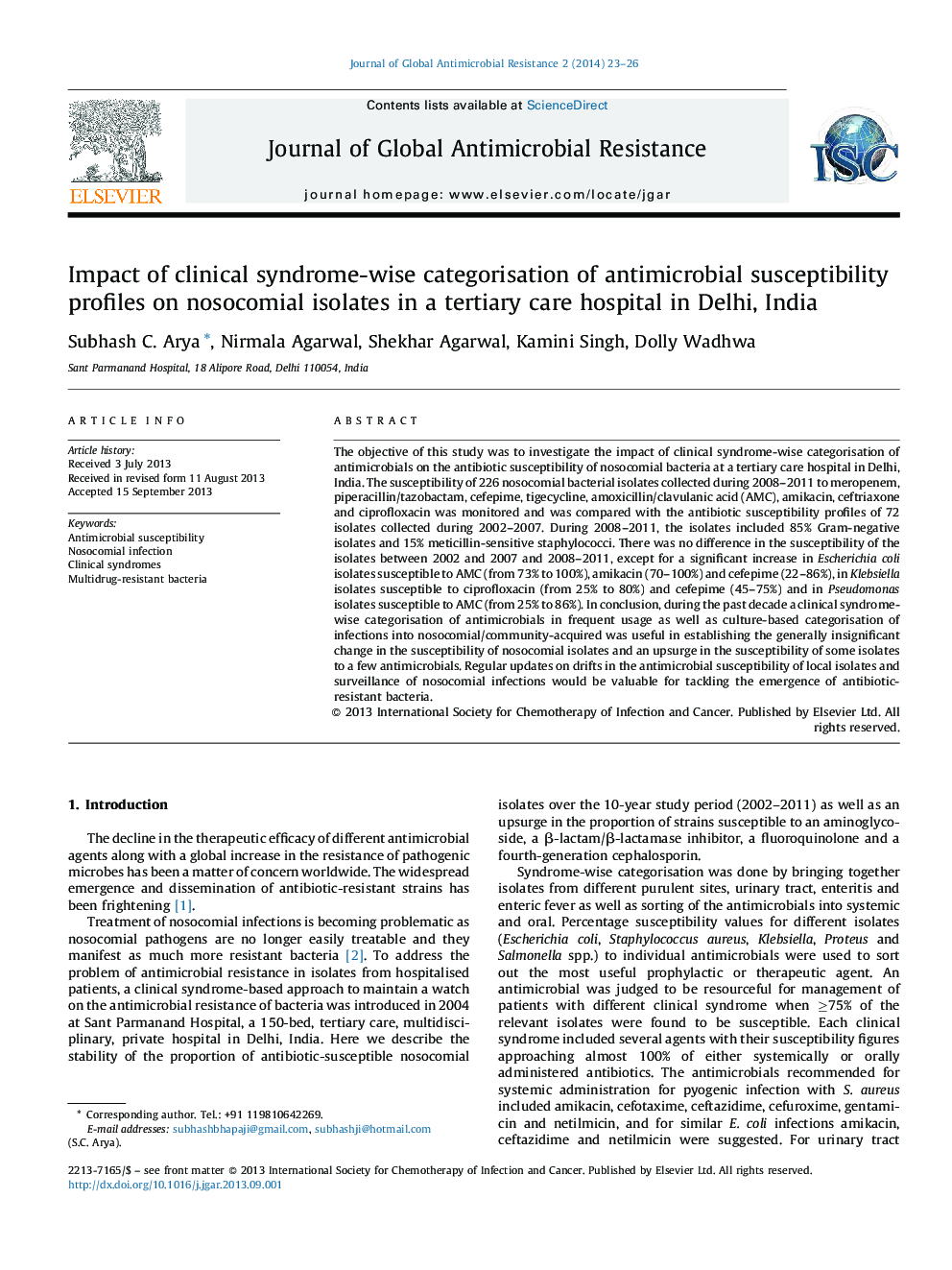| Article ID | Journal | Published Year | Pages | File Type |
|---|---|---|---|---|
| 3405759 | Journal of Global Antimicrobial Resistance | 2014 | 4 Pages |
Abstract
The objective of this study was to investigate the impact of clinical syndrome-wise categorisation of antimicrobials on the antibiotic susceptibility of nosocomial bacteria at a tertiary care hospital in Delhi, India. The susceptibility of 226 nosocomial bacterial isolates collected during 2008-2011 to meropenem, piperacillin/tazobactam, cefepime, tigecycline, amoxicillin/clavulanic acid (AMC), amikacin, ceftriaxone and ciprofloxacin was monitored and was compared with the antibiotic susceptibility profiles of 72 isolates collected during 2002-2007. During 2008-2011, the isolates included 85% Gram-negative isolates and 15% meticillin-sensitive staphylococci. There was no difference in the susceptibility of the isolates between 2002 and 2007 and 2008-2011, except for a significant increase in Escherichia coli isolates susceptible to AMC (from 73% to 100%), amikacin (70-100%) and cefepime (22-86%), in Klebsiella isolates susceptible to ciprofloxacin (from 25% to 80%) and cefepime (45-75%) and in Pseudomonas isolates susceptible to AMC (from 25% to 86%). In conclusion, during the past decade a clinical syndrome-wise categorisation of antimicrobials in frequent usage as well as culture-based categorisation of infections into nosocomial/community-acquired was useful in establishing the generally insignificant change in the susceptibility of nosocomial isolates and an upsurge in the susceptibility of some isolates to a few antimicrobials. Regular updates on drifts in the antimicrobial susceptibility of local isolates and surveillance of nosocomial infections would be valuable for tackling the emergence of antibiotic-resistant bacteria.
Keywords
Related Topics
Life Sciences
Immunology and Microbiology
Applied Microbiology and Biotechnology
Authors
Subhash C. Arya, Nirmala Agarwal, Shekhar Agarwal, Kamini Singh, Dolly Wadhwa,
